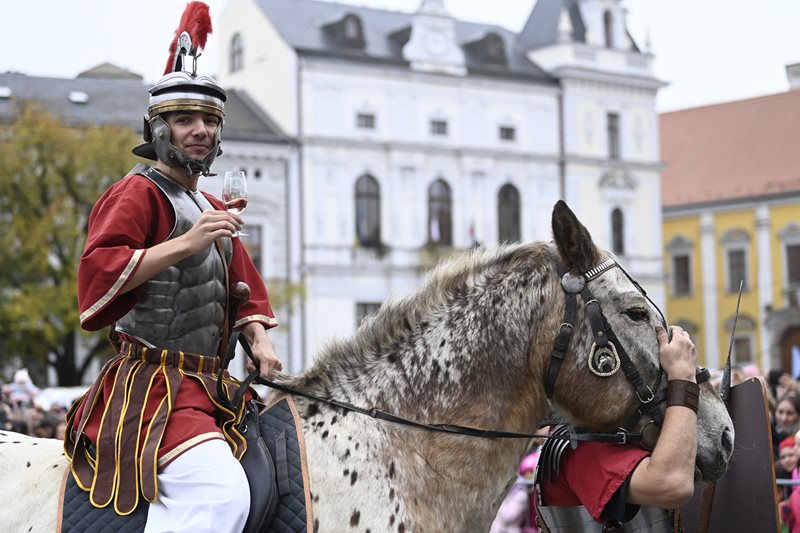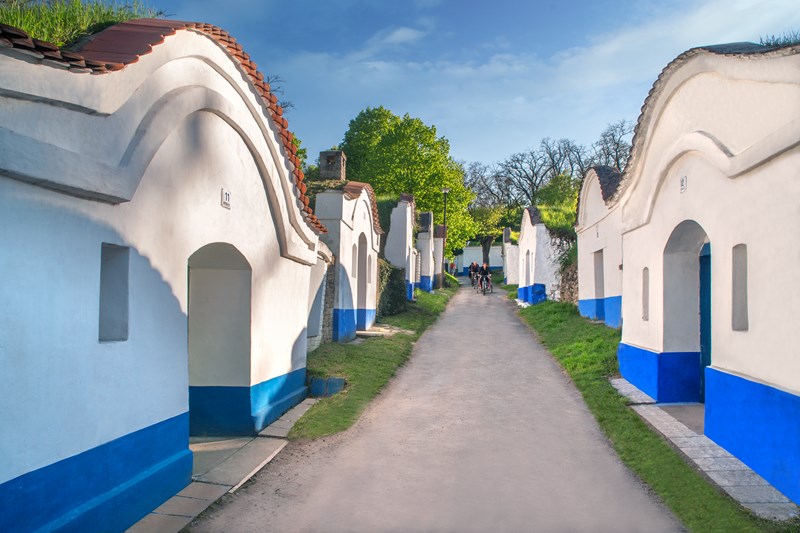Grape Harvest: A Celebration of the Harvest and Joyful Festivities
Grape harvest festivals are among the most significant events for winemakers, held annually in autumn (September and October). These festivals celebrate the harvest and the year's bounty. One of the largest and best-known events is the Pálava Grape Harvest Festival in Mikulov, which features a rich cultural programme. Visitors can look forward to traditional costumes, folk dances, songs, and wine tastings directly from local winemakers. Guided tours of wine cellars are an essential part of the festivities.

Similarly to Mikulov, other wine destinations also celebrate the grape harvest. Big grape harvest festivals are the Znojmo Historical Vintage Festival, the Prague Vintage Festival, the Mělník Vintage Festival and the Valtice Vintage Festival in the heart of the Lednice–Valtice complex, a UNESCO World Heritage site. Popular events also include the traditional Harvest and Grape Harvest Festival at Kačina Castle, organised by the Wine cellars of Kutná Hora each September. This festival is accompanied by a street art event. In May, Kutná Hora hosts a renowned Gastrofestival, where visitors can explore wine and food pairings.
Czech wine experiences: Feasts and Folklore

Another way to enjoy wine is through traditional feasts. In South Moravia, places like Strážnice and Hodonín host some of the largest folklore festivals and wine feasts each year. These multi-day celebrations are filled with cheer, songs, and dances. Guests can also savour traditional dishes and other regional specialities during these events
Czech wine tasting events
Wines from various Czech regions boast unique flavours and characteristics shaped by soil, climate, and the expertise of local winemakers. Wine tastings are a vital part of traditional winemaking celebrations. In Moravian wine villages, these tastings are called "košt." They offer a fantastic opportunity to meet winemakers, who often present their wines at local festivals and celebrations.

Just for context, the Czech Republic has two wine regions – Moravia, home to most of the country’s vineyards, and Bohemia, closer to Prague. We’ve dedicated a special section to these wine regions and their six subregions. Once you venture into the winemaking areas of Bohemia or Moravia, you’ll enjoy popular tastings and samplings of varietal specialities (e.g., Blaufränkisch or Pálava), vintage wines, or young wines called Saint Martin’s wines. These are first opened in early November, coinciding with Saint Martin’s Day, when Czech homes, restaurants, and pubs serve roasted St. Martin´s goose. You can also taste young wines later at events like the Wine Night in Mělník.

Czech wine cellar tours
Wine cellar tours offer a fantastic way to learn about winemaking traditions. Many wine cellars in the Czech Republic are historic, with captivating stories to share. In the village of Vrbice, you’ll discover a colony of wine cellars known as Pod Strážním vrchem. A visit to the open-air museum in Strážnice will take you back in time, while the wine cellars of Plže – Petrov near Strážnice are truly unique. This site, featuring around 80 wine cellars, is a listed heritage site for folk architecture. The cellars form street-like clusters with two small squares and are a must-see for anyone interested in Czech winemaking.

If you visit Velké Pavlovice, you can explore modern wineries specialising in high-quality wines. Some wineries even offer special experiential tours with tastings, where you’ll learn about every step of the winemaking process, from grape harvesting to bottling. Highlights include the château cellar in Valtice, tours of the Templar cellars in Čejkovice, or exploring modern architecture in vineyards.
For history and wine enthusiasts, the Wine Trail in Dolní Kounice is fascinating, with its medieval cellars. Other must-visit cellar locations include Hustopeče, Mikulčice, and Novosedly. In Bohemia, near Prague, don’t miss the château cellars in Mělník, Roudnice nad Labem, or Kutná Hora.







